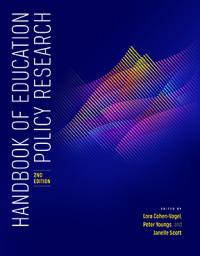The Early Care and Education Workforce in the United States
AERA members: Please enter your coupon code in the shopping cart coupon discount field.
The Early Care and Education Workforce in the United States
Anna J. Markowitz
Daphna Bassok
Click here to view and purchase Handbook of Education Policy Research, 2nd Edition
Title information
Early care and education (ECE) experiences both promote young children’s development and serve as a crucial support for working families. For these reasons, public investments in ECE have grown in the past three decades, as has recognition of the importance of early educators. Nonetheless, a history of fragmentation in ECE, alongside a considerable data deficit relative to K–12, has limited our knowledge of who serves young children and how they in turn are supported. The authors of this chapter summarize what is known in relation to two facts: (a) on average, early educators have less education and training, less compensation, and less on-the-job professional support than their K–12 counterparts; and (b) education and training, compensation, and on-the-job professional supports are higher among the Head Start and public pre-K workforces than among teachers working in home-based and center-based childcare. The authors then discusses implications of these facts, as well as key areas for future research.
Keywords: early education; childcare; Head Start; pre-K

